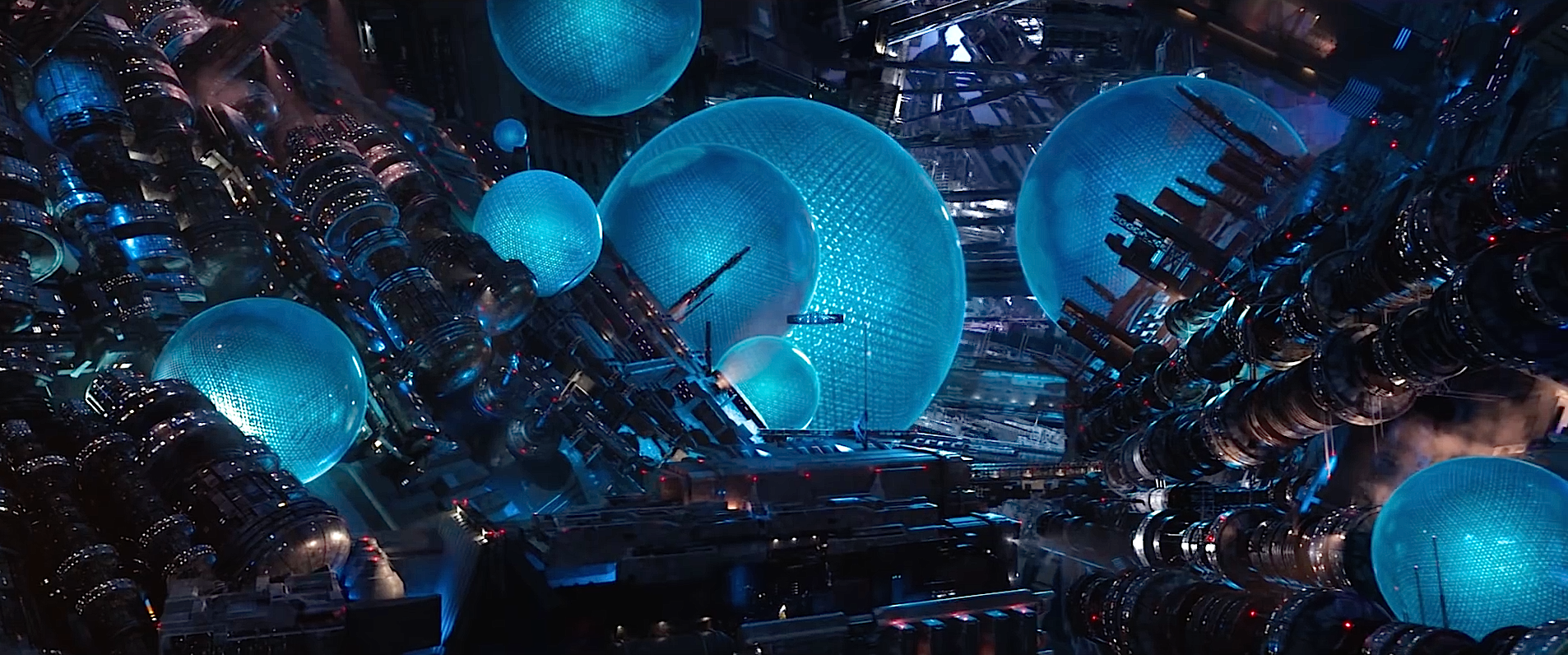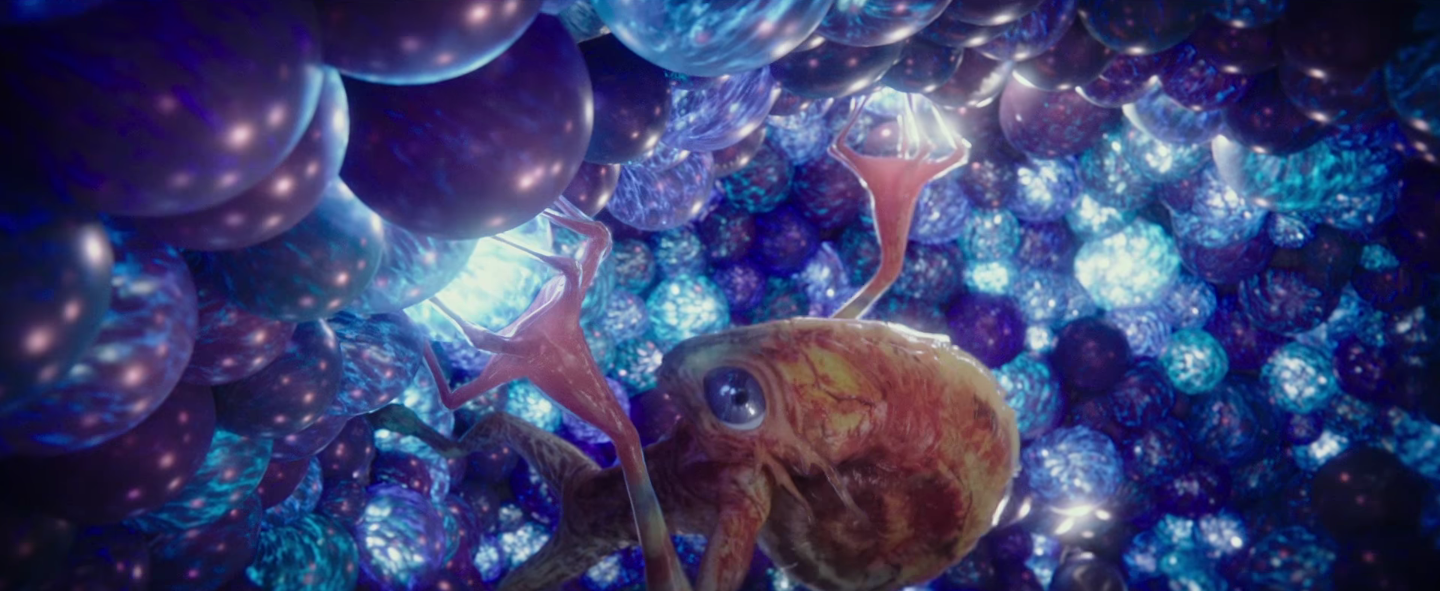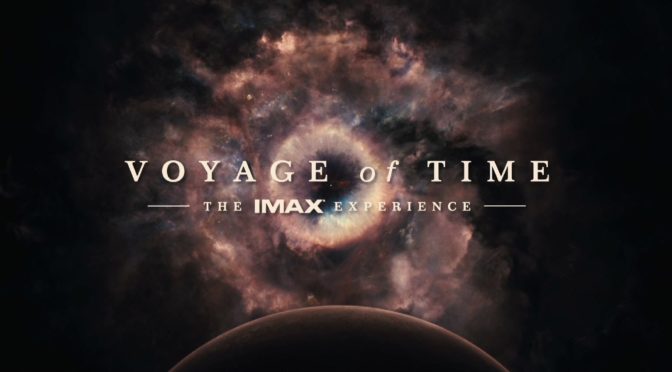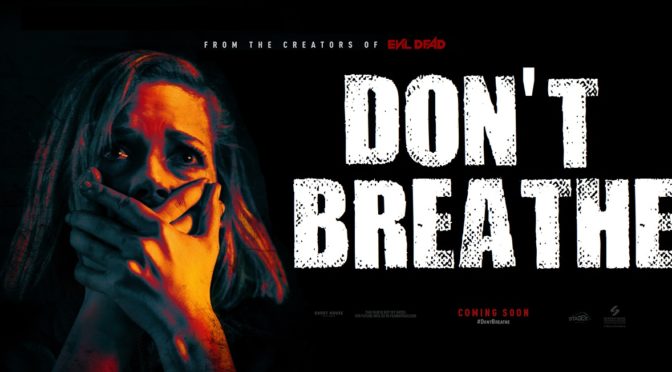When people first came out of screenings of Avatar, they spoke of wonder and amazement. They talked about being transported to a world unlike anything they had ever seen before and in a way they had never experienced. But I never felt that way. To me, it was derivative world with an even more derivative plot. The most noticeable thing about the CG world was just how expensive it must have been to render. Not creatively challenging. Expensive. I mention this because I think I finally understand how those people felt back in 2009. Luc Besson (Léon: The Professional) has done what James Cameron tried, but couldn’t accomplish. In Valerian and the City of a Thousand Planets, he adapts a comic series with incredible devotion. The story follows Valerian (Dane DeHaan; A Cure for Wellness) and Laureline (Cara Delevingne; Paper Towns), special agents of the human empire in the 28th century. The titular city floats through space and houses millions of individuals of all species living in all biospheres, but there is a problem. Deep within the city is a growing radioactive zone and none of the soldiers sent there have come back alive. Valerian and Laureline must find out what is causing the disturbance before it threatens the lives of the city’s many inhabitants.

Besson’s visuals are on another level entirely. These are some of the most creative and hyper-detailed renderings ever put to screen. Some of these may be pulled from the original comic, but it’s clear that Besson and his team of concept artists put a staggering amount of labor and love into every frame. Opening scenes of a peaceful, primitive species on a beach planet are genuinely awe-inspiring. Water shimmers and color radiates with life. Unlike many of his contemporaries, Besson uses every spectrum of the rainbow and doesn’t succumb to the dull tones used to make a film seem “realistic”. There is so much sheer variety in the film’s settings. While Avatar only featured a jungle, Valerian has deep sea exploration, life-sized nervous systems, and the most gorgeous semiconductor manufacturing you will ever see. All of these environments have the originality and detail to sustain entire films of their own, but they have mere cameos here because there is so much other creativity to show. There is even an inventive spin on the standard seedy desert flea market sci-fi trope. The market is situated in the middle of the desert, but visitors need to use special virtual reality gear to phase themselves and their belongings in and out of the market. With the equipment on, the area is a bustling bazaar filled with diverse species selling anything you could want, legal or not. Besson uses this as the perfect setting for a heist. As Valerian sneaks in and out of the virtual reality, the tense subterfuge is contrasted with images of him walking through an empty desert to comical effect. This is just one of the many examples of how the incredible effects elevate common scenarios.

It’s a shame that the beautiful images have to feature two disappointing leads. DeHaan and Delevingne only have a small fraction of the chemistry the script demands of them and fall too easily into archetypes with DeHaan as the overconfident asshole and Delevigne as the uptight one. DeHaan’s cocky delivery never has the charm needed and Delevigne is relegated to nagging and rolling her eyes. The plot itself mostly serves as an excuse to traverse the varying environments within the city. While it does feature endearing side characters, particularly a trio of enterprising informants, the film’s narrative and its mismatched leads are a disappointment. Fortunately, this is a movie where the strengths can mask the flaws. The unbridled artistry that went into every landscape and every character create a computer-generated world of pure delight. For those who can overlook mediocre writing, Besson and company have produced visuals that will be talked about for years to come.

4/5 stars.




